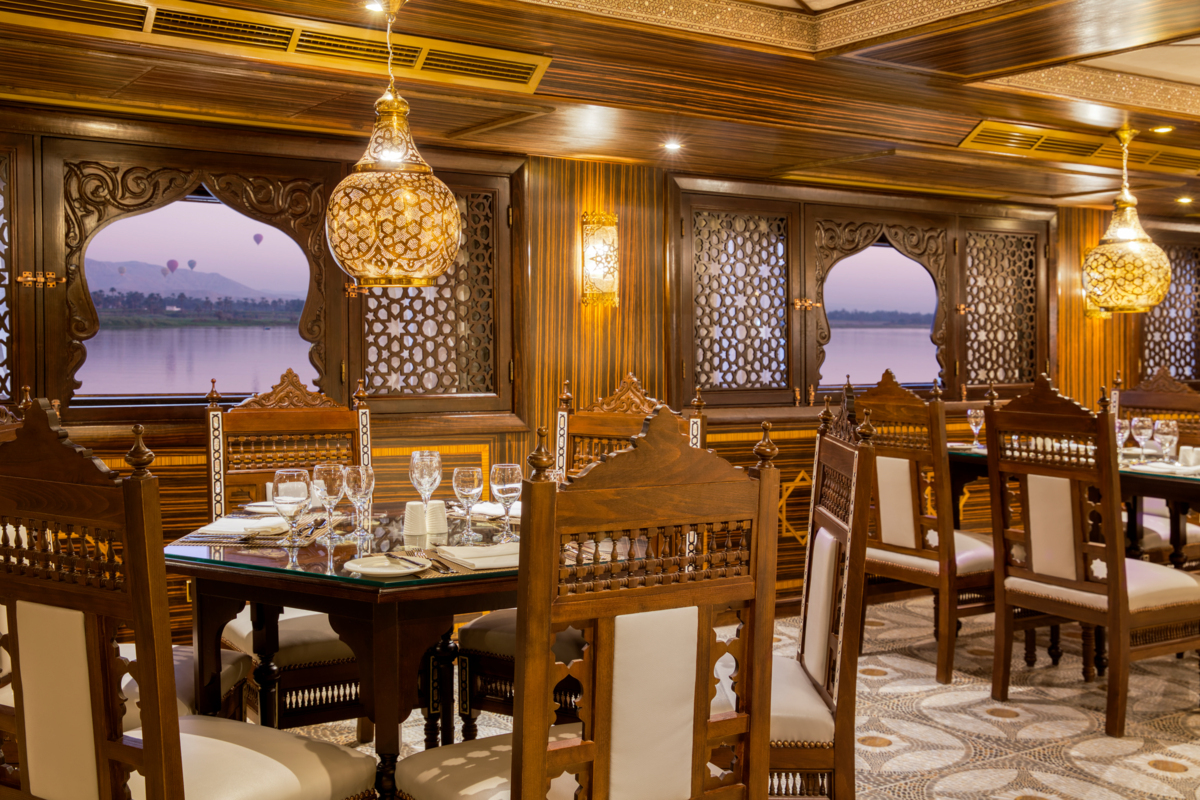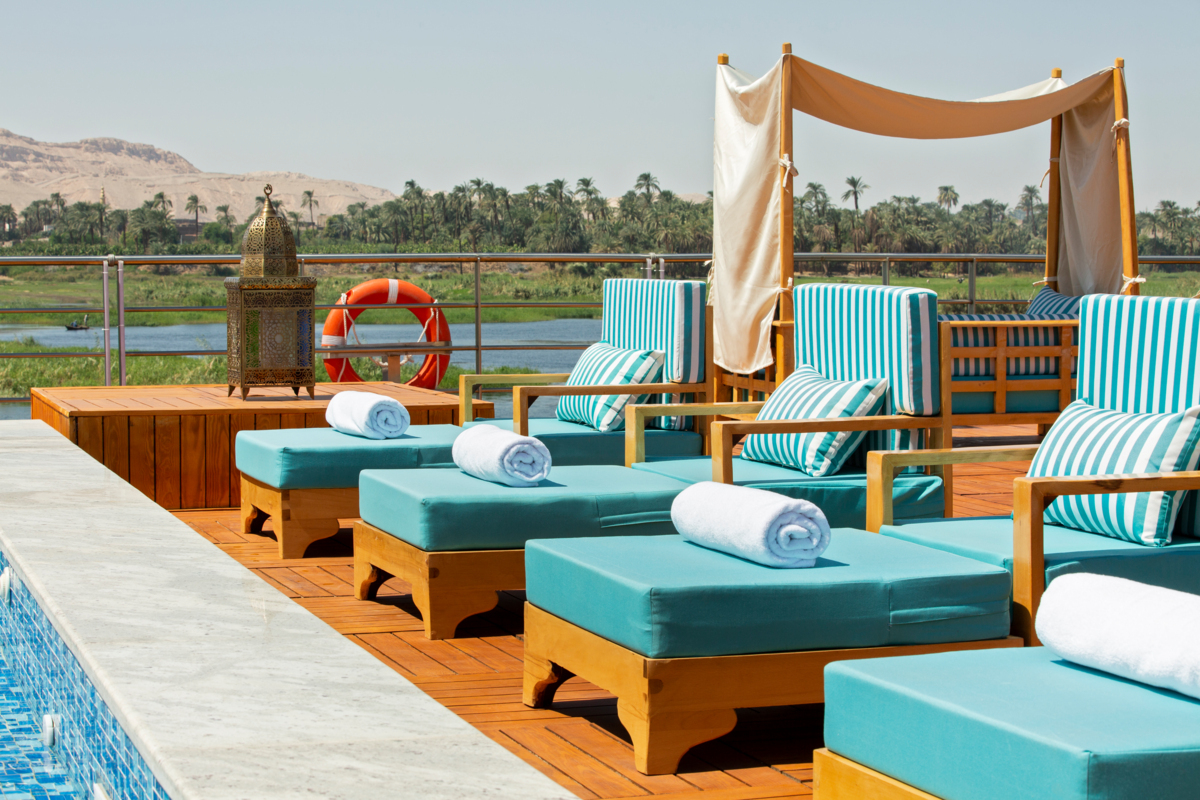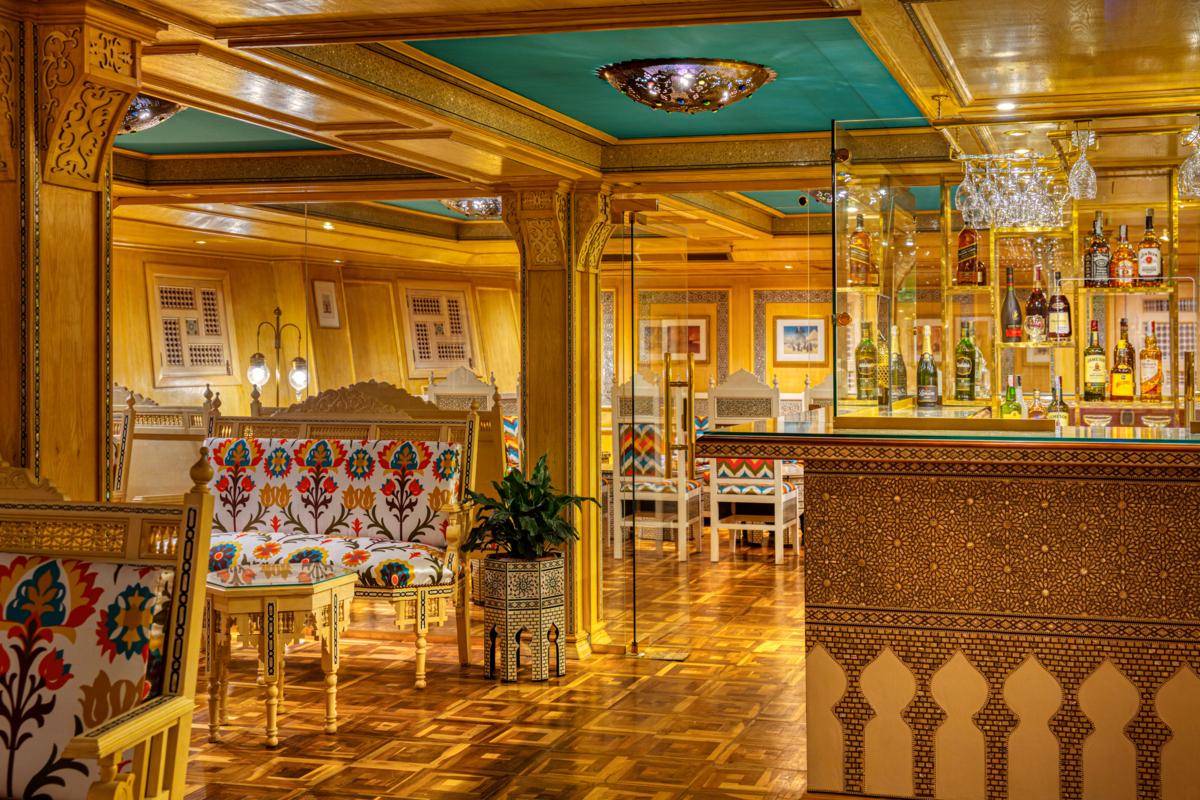Egypt. The very name conjures up visions of ancient temples, Cleopatra, the Great Pyramids, mummies, and maze-like bazaars filled with tantalizing spices. And a Uniworld cruise along the Nile won’t disappoint. Follow in the footsteps of past explorers, adventurers, and archeologists as you discover Egypt’s ancient mysteries such as the Valley of the Kings and the Great Sphinx, World Heritage sites unrivaled in the modern world.
Egypt holds a special place in the hearts of everyone who visits. And as astounding as it is to gaze upon Pharaoh Tutankhamun’s mummy or trek through the Great Pyramids of Giza, the people and culture of Egypt are the reasons why it is such an unforgettable place.

When to Go
Spring usually sees sunny and warm weather with occasional rain while summer can be extremely hot and dry. Somewhat cooler days and even cooler evenings in autumn and winter make it an ideal time to visit.

What to Pack
We suggest bringing lightweight, breathable fabrics to stay comfortable in the warm weather. Long sleeves, sunglasses, hats, and ankle-length pants will help protect you from the strong sun. Please keep in mind that revealing clothing is frowned upon. You are required to cover your arms and legs while visiting a mosque. In the winter months, you may wish to bring a jacket for morning excursions, when temperatures can be as low as 50º F / 10º C.
See the Sites
Egypt is full of history, ancient temples, and world-famous landmarks. Learn more about a handful of the many you will visit on a Uniworld cruise:
Pyramids of Giza: Visit the only surviving Wonder of the Ancient World, the Pyramids of Giza. Beholding these legendary structures up close lets you appreciate their stone masonry and awe-inspiring architectural precision. Until as recently as the 19th century, the oldest and largest of the three pyramids—Khufu—was the tallest building in the world; when it was completed around the 26th century BC, it stood about 50 stories high.
Sphinx: With the body of a crouching lion and the head of a man, it is the largest monolith statue in the world. Experts believe that the Sphinx (known to the early Arabs as Abu al-Hol, “Father of Terror”) was built in the 26th century BC during Khafre’s reign, perhaps as a portrait of the pharaoh himself. Unfortunately, much of this monument has either eroded or been deliberately destroyed over the years. Some of its facial features are no longer intact, such as the beard and the nose—the latter of which was not shot off by Napoleon’s soldiers, as widely believed, but chiseled away many centuries earlier. A number of excavations in modern times have removed the sand that built up around the Sphinx over the centuries and kept much of it buried. Despite its timeworn condition, the Sphinx still kneels gracefully as it has for thousands of years, looking toward the east with an enigmatic smile.
Temple of Karnak: Stroll through the grand avenues of sphinxes and halls of gigantic columns of the magnificent Temple of Karnak. This vast complex was originally established during the Middle Kingdom (1991-1633 BC), and various dynasties over the next 1,300 years continued to expand it. Karnak is a massive and simply astounding site, reflecting the combined achievements of many generations of ancient builders. Buried under sand for a thousand years, the UNESCO- designated Karnak complex is composed of three main temples, smaller enclosed temples and several outer temples. The largest of these is dedicated to Amun, a great pharaonic god. Enter the main compound, the Precinct of Amun, through the Great Court, and continue to the dazzling Great Hypostyle Hall—sometimes called the Hall of Columns—an imposing forest of 134 enormous sandstone columns in the form of papyrus stalks.
Temple of Luxor: Enter the temple through the great pylon—a ceremonial gateway—where two enormous statues of Ramses II still stand, along with a pink granite obelisk. Continue to an enormous interior courtyard, where the Abu Haggag Mosque once stood atop the ruins of the temple. You can still see a ghostly remnant of the mosque on the east side of the courtyard, high above the columns, its arched doorway opening into thin air. The temple’s chief architects were Amenhotep III (Egypt’s “Sun King,” also known as Amenophis III) and Ramses II, and it was constructed over hundreds of years, beginning around 1400 BC. It was dedicated to the “father of all life,” the god Amun, sometimes referred to as Amon or Amon-Ra. At the rear of the temple is the Sun Court of Amenhotep III, as well as the Bark Shrine that was rebuilt by Alexander the Great. The Luxor Temple complex is at its most stunning at sunset, when it is illuminated with the golden glow of the setting sun.
Valley of Kings: The remote and barren Valley of the Kings was used for royal burials for nearly 500 years. It was here that the bodies of great pharaohs such as Ramses II and Thutmose III were once laid to rest and where the mummified remains of the boy king Tutankhamen are still on display. The idea for establishing this royal burial ground is thought to have originated with Thutmose I, who opted to conceal his tomb far from his mortuary temple in an effort to deter tomb robbers. Subsequent pharaohs did the same, changing a tradition that had endured for close to 2,000 years. Within the tombs and along the walls of the Valley of the Kings, inscriptions from the Book of the Dead provided instructions on how the pharaohs could safely journey to the next world and avoid the dangers that lay on the way. For the sake of preservation, only a handful of the most interesting tombs are open to visitors at any given time.
Set Sail in Style and Luxury
The River Tosca perfectly captures the warmth and style of Egypt, taking guests on a culturally enriching adventure down the Nile in absolute luxury. This all-suite ship is elegantly designed with wood finishes and cozy public spaces. From the sprawling Sun Deck with shaded cabanas and a swimming pool, to the stylish lounge decorated with local wares, every space is inspired by the region in which it sails. Comfortable suites are fitted with the finest locally made products—like Egyptian cotton linens, for example. With a maximum capacity of 82 guests and a staff to guest ratio of almost 1:1, a cruise on the River Tosca is about as intimate and indulgent as it gets.

The S.S. Sphinx offers two gourmet dining venues, a swimming pool, massage room, and 42 gorgeously appointed suites. This Super Ship ™ vessel offers an authentically immersive onboard experience, with bespoke decor by local artisans and materials sourced regionally—such as fine Egyptian cottons, marble, and hand-carved blonde wood—to highlight Egyptian craftsmanship while minimizing our carbon footprint
Most Recent
- Celebrating Special Occasions at Sea: Your Ultimate Guide to Planning a Memorable Royal Caribbean Cruise
- Escape the Winter Chill: Why Booking with a Travel Agent Makes Your Tropical Getaway Better Than Ever
- Below the Radar and a Total Dream
- Discover the Dominican Republic: Wellness Retreats and Top Activities
- Sail Beyond Ordinary: Experience MSC Seascape’s Caribbean Luxury Adventure
Most Popular
- Top 5 Reasons to Cross the Pond this Winter
- Europe 2023-2024
- Essential Tips for Booking Your Next All-Inclusive Vacation
- Huge Hotel Brand Launches First All-Inclusive
- 7 Reasons Why Portugal Is One Of Europe’s Top Destinations, Year After Year










